In a divorce, the laws of equitable distribution distinguish marital property from separate property. Technically, only marital property, that is, proper...
When you get into a car accident in Washington, D.C. that causes injury, death, or at least $250 of property damage, you are required to report the crash immediately to the Metropolitan Police Department. After the responding officer concludes an investigation, the officer will generate a police accident report, or Form PD 10. The information in this crash report serves as evidence and is critical to any personal injury claim you decide to pursue due to the District of Columbia’s strict laws regarding contributory negligence.
For motor vehicle accidents, Washington, D.C. follows a no-fault system. That means you turn to your own insurance policy first to recover compensation for your damages. You’re allowed to step outside this no-fault system to pursue compensation from the at-fault party if your damages exceed your insurance policy limits or if your injuries are serious enough to meet certain requirements.
Under DC’s contributory negligence law, you may not be eligible to recover compensation from a defendant if you are found to be even 1% responsible for your accident, unless you are a pedestrian, bicyclist, or other non-motorist, in which case you may not be more than 50% at fault to make a financial recovery. So, it’s critical to review your police accident report and dispute any inaccuracies.
You may request a copy of your accident report from the Metro Police Department online, in person, or through the mail. If you need help obtaining a copy of your crash report or if you need someone to help you set the record straight, contact a Washington, D.C. car accident lawyer right away to protect your legal rights and learn your legal options.
Traffic Crash Report (Form PD 10)
https://www.nhtsa.gov/sites/nhtsa.dot.gov/files/documents/dc_pd10_dec2008_sub5_6_10.pdf
https://www.nhtsa.gov/sites/nhtsa.dot.gov/files/documents/dc_par_pd10_4_2011_sub23feb2012.pdf
https://actar.org/pdf/dc_ovl1.pdf
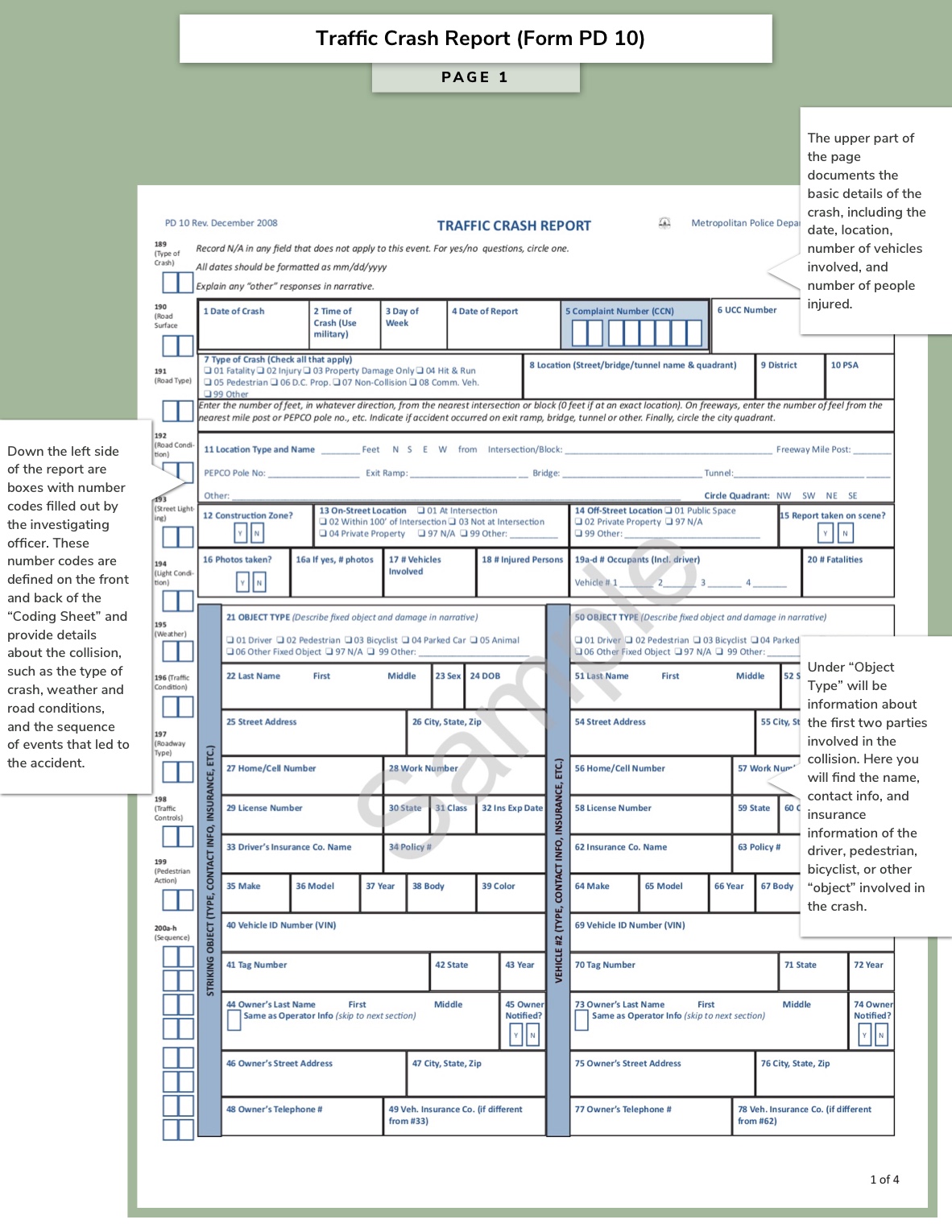
Page 1
Down the left side of the report are boxes with number codes filled out by the investigating officer. These number codes are defined on the front and back of the “Coding Sheet” and provide details about the collision, such as the type of crash, weather and road conditions, and the sequence of events that led to the accident.
Click here to download a printable PDF of How to Read Your Washington, D.C. Accident Report.
The upper part of the page documents the basic details of the crash, including the date, location, number of vehicles involved, and number of people injured.
Under “Object Type” will be information about the first two parties involved in the collision. Here you will find the name, contact info, and insurance information of the driver, pedestrian, bicyclist, or other “object” involved in the crash.
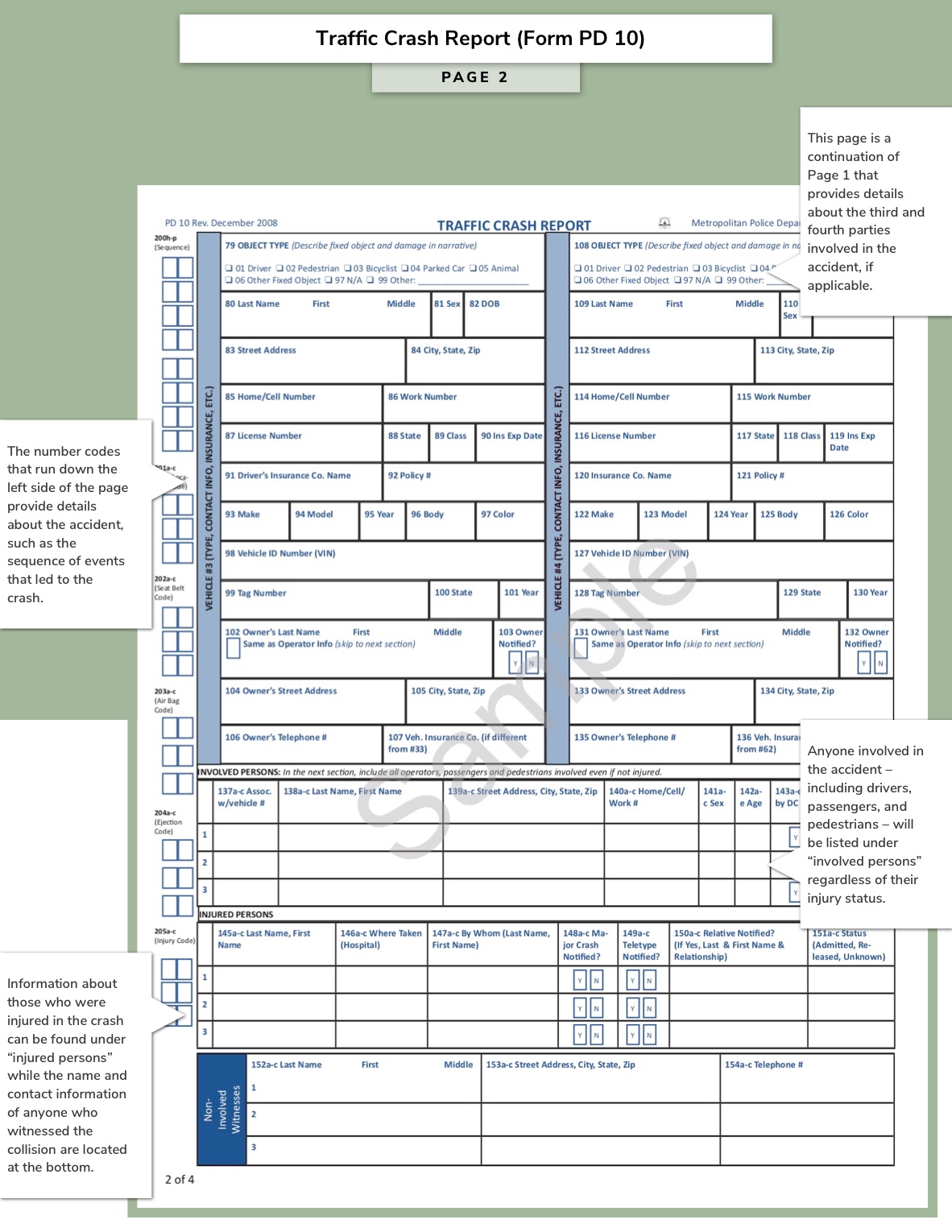
Page 2
The number codes that run down the left side of the page provide details about the accident, such as the sequence of events that led to the crash.
Anyone involved in the accident – including drivers, passengers, and pedestrians – will be listed under “involved persons” regardless of their injury status.
Information about those who were injured in the crash can be found under “injured persons” while the name and contact information of anyone who witnessed the collision are located at the bottom.
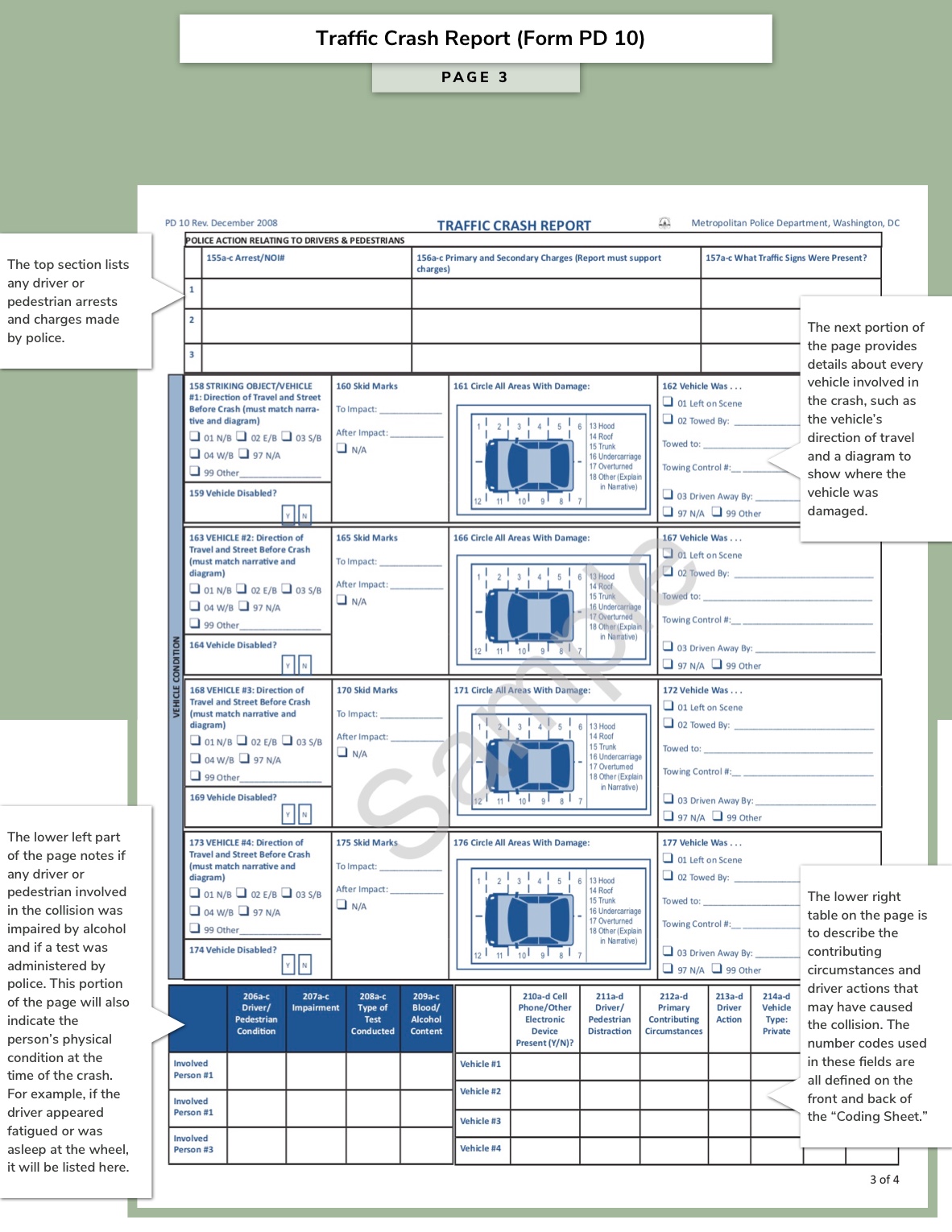
Page 3
The top section lists any driver or pedestrian arrests and charges made by police.
The next portion of the page provides details about every vehicle involved in the crash, such as the vehicle’s direction of travel and a diagram to show where the vehicle was damaged.
The lower left part of the page notes if any driver or pedestrian involved in the collision was impaired by alcohol and if a test was administered by police. This portion of the page will also indicate the person’s physical condition at the time of the crash. For example, if the driver appeared fatigued or was asleep at the wheel, it will be listed here.
The lower right table on the page is to describe the contributing circumstances and driver actions that may have caused the collision. The number codes used in these fields are all defined on the front and back of the “Coding Sheet.”
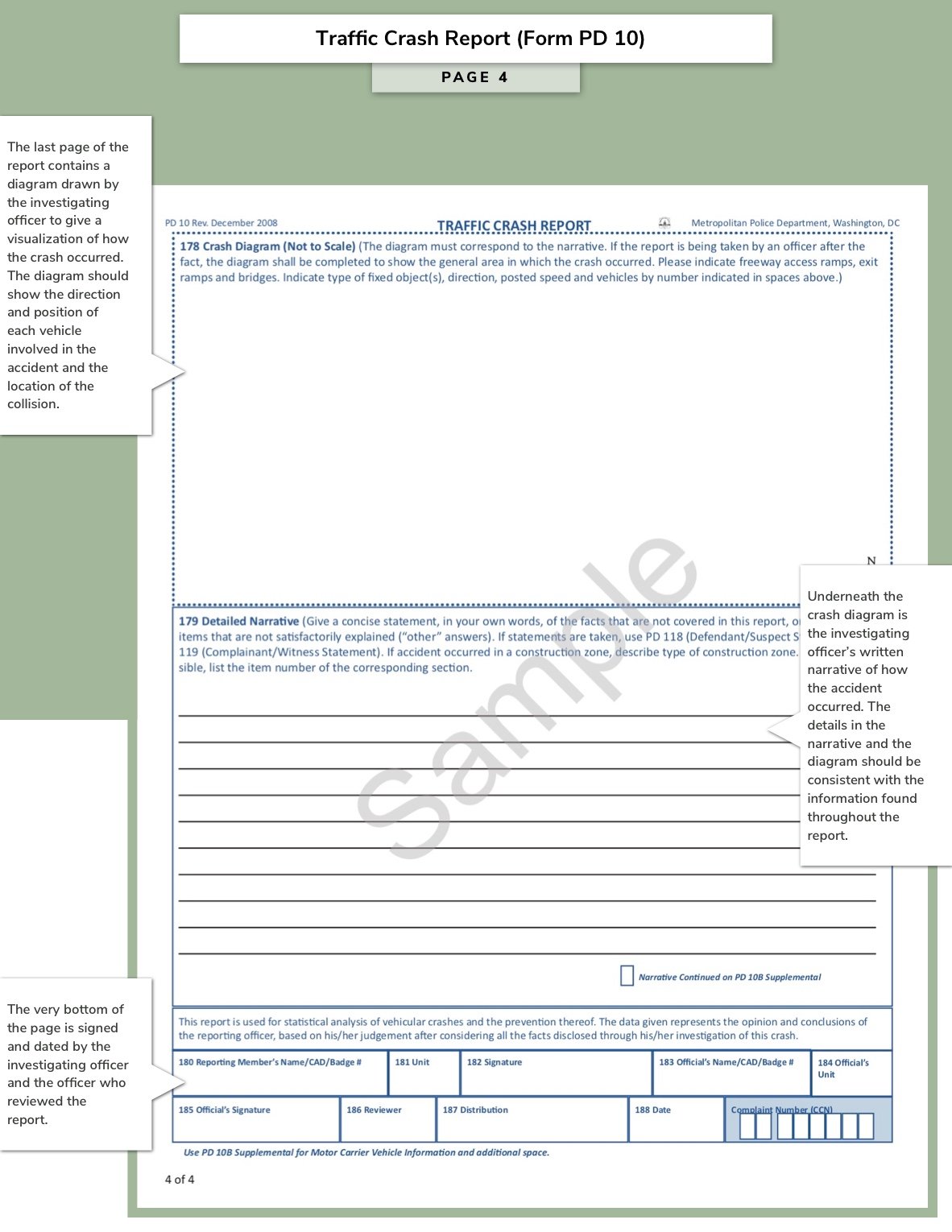
Page 4
The last page of the report contains a diagram drawn by the investigating officer to give a visualization of how the crash occurred. The diagram should show the direction and position of each vehicle involved in the accident and the location of the collision.
Underneath the crash diagram is the investigating officer’s written narrative of how the accident occurred. The details in the narrative and the diagram should be consistent with the information found throughout the report.
The very bottom of the page is signed and dated by the investigating officer and the officer who reviewed the report.
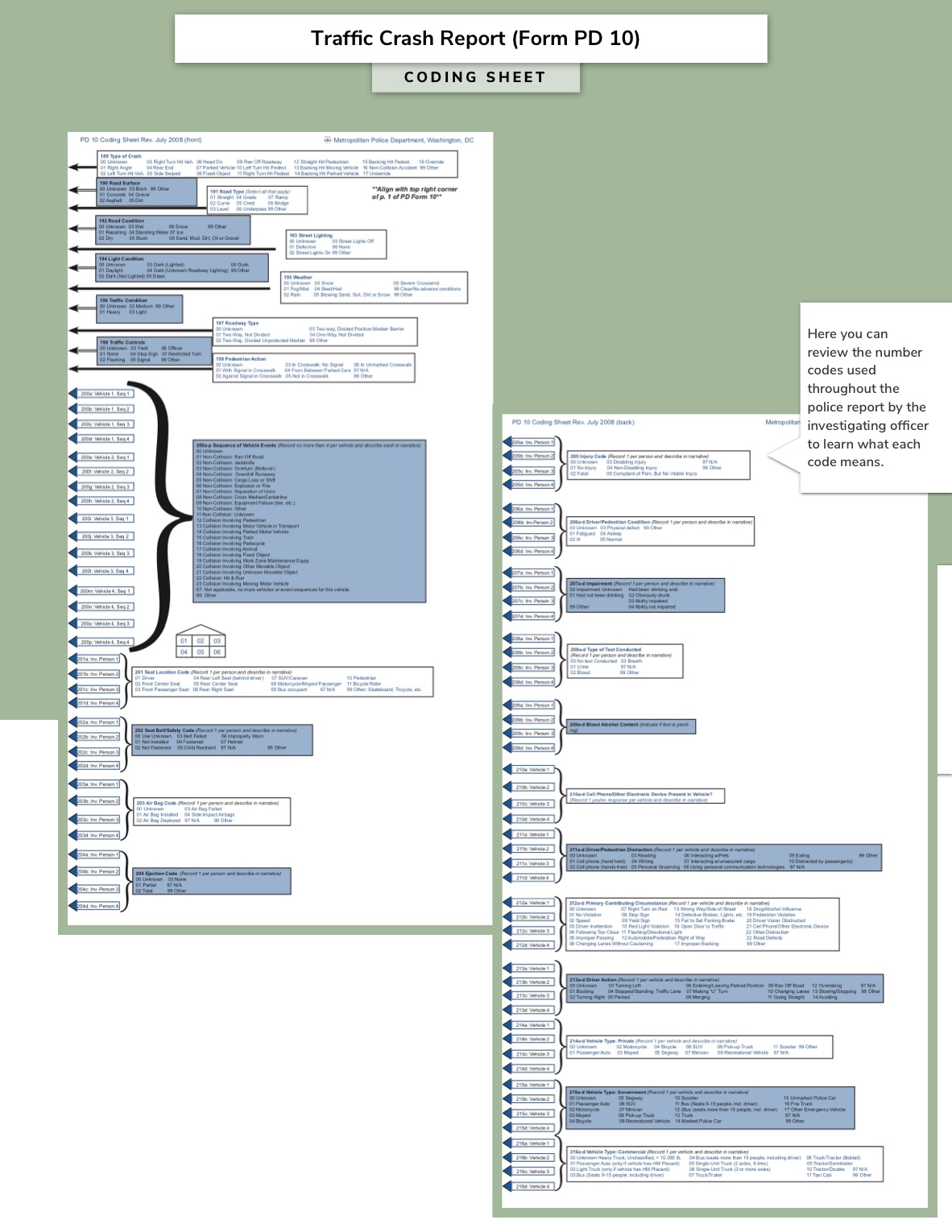
Coding Sheet
Here you can review the number codes used throughout the police report by the investigating officer to learn what each code means.





